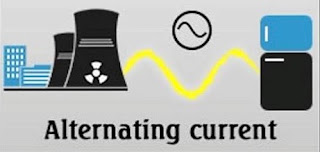Hydroelectric (hydel) power plants convert the energy stored in a water
into electrical energy by the use of water turbines coupled with generators.
The water from a height (water head) is allowed to fall on the blades of a
turbine through long pipes or tunnels called penstocks. This causes the turbine
blades to rotate which in turn rotates the rotor of an alternator.
A dam is constructed to make a storage reservoir, from where a high
pressure tunnel is taken off to the valve house. The penstocks are large pipes,
which carry huge quantity of water from valve houses to the power house. A
surge tank is situated just beside the valve house. In case due to reduction of
load on the turbines the inlet valves to the turbines are suddenly closed,
water hammer due to very high pressure is created which may damage the
penstocks. Surge tank absorbs water hammer by increase the water level and it.
In case of heavy load, it will lower its water level and will increase the
water supply to the turbine. The common type of turbine (prime mover) used is
Pelton wheel.
ADVANTAGES
- Once a dam is constructed electricity can be produced at a constant rate
- . The lake’s water can be used for irrigation purpose
- . No need of fuel, because if it operation by using water
- . They don’t pollute the atmosphere
- Less working and maintenance cost
- Construction is simple
DISADVANTAGES
- Dams are extremely expensive to build and must be built to a very high standard.
- The flooding of large of land means that the natural environment is destroyed.
SELECTION OF SITE
The following points should be taken into account while selecting the
site for hydroelectric station.
1. Availability of water: Hydel plants should be built at a place [eg:
river, canal] where adequate water is available at a good head.
2. Storage of water: it is necessary to store
water by constructing a dam in order to ensure the generation of power
throughout the year.
3. Cost and type of land: The land for the construction of the planet
should be available at a reasonable price. Further the bearing capacity of the
site should be adequate to withstand the weight of heavy equipments which are
to be installed.
4. Transportation facilities: The site should be accessible by rail and
road so that necessary equipment and machinery could be easily transported.



























